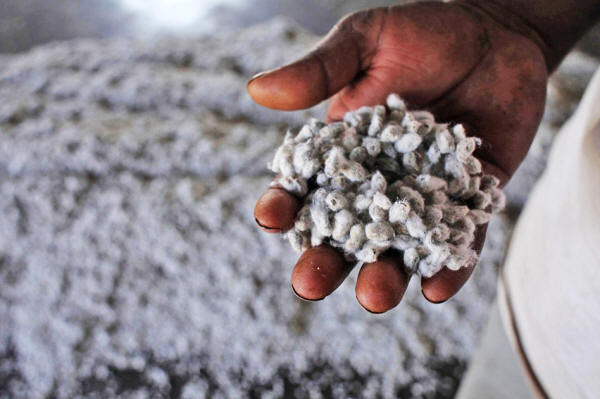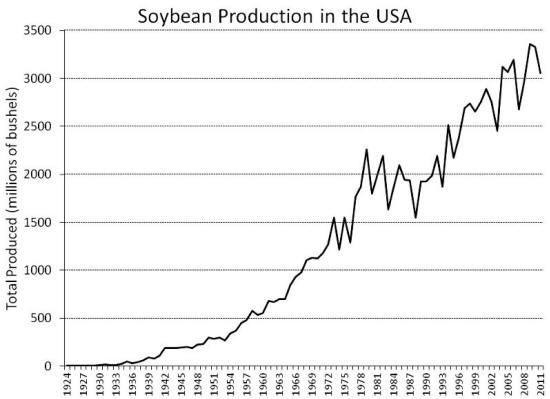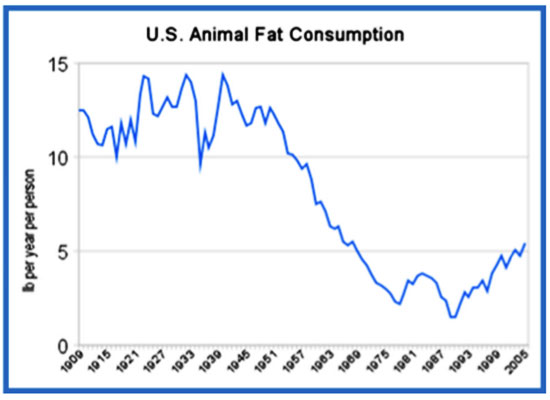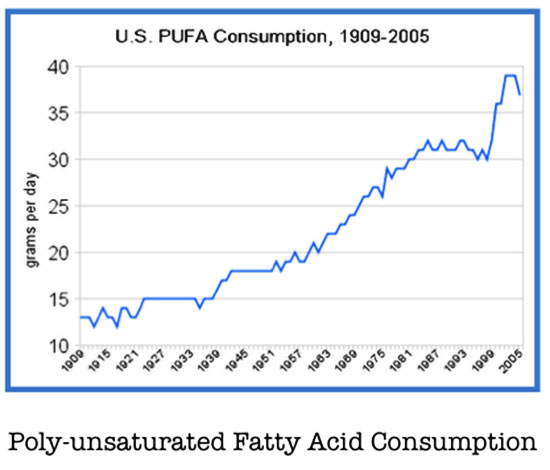|
We believed that fat, and more specifically saturated fat (found primarily in animal foods), was thought to increase cholesterol and cause heart disease.
Instead, we should switch to 'heart healthy' vegetable oils, like,
But recent evidence suggests this was a Faustian bargain...
Cotton plantations for fabric were cultivated in the United States as early as 1736.
Prior to this, it was largely an ornamental plant. At first, most cotton was home-spun into garments, but the success of the crop meant that some could be exported to England. From a modest 600 pounds of cotton in 1784, it grew to over 200,000 by 1790.
The invention of the
cotton-gin by Eli Whitney in
1793 led to a staggering 40,000,000 pounds of cotton production.
Some could be used for
livestock feed but there was still a mountain of garbage. What could
be done with this garbage? Mostly it was left to rot or simply
dumped illegally into rivers. It was toxic waste.
Enterprising entrepreneurs tried to crush the worthless cotton seeds to extract the oil, but it was not until the 1850s that the technology matured to the point that commercial production could commence.
But in 1859, something happened that would transform the modern world.
Colonel Drake
struck oil in Pennsylvania in 1859 introducing a massive supply of
fossil fuels to the modern world. Before long, the demand for
cottonseed oil for lighting had completely evaporated and
cottonseeds went back to being classified as toxic waste.
We don't eat our cotton T-shirts after all...
Similarly, cottonseed oil, being light in flavor and slightly yellow was blended with olive oil to reduce costs.
This led to Italy completely banning the adulterated American olive oil in 1883.
The Proctor & Gamble company used cottonseed oil for the manufacture of candles and soap, but soon discovered that they could use a chemical process to partially hydrogenate cottonseed oil into a solid fat that resembled lard.
This process produced
what are now called 'Trans'
fats, making this product extremely versatile in the
kitchen, even if nobody actually knew whether we should be shoving
this former toxic waste into our mouths.
Was it healthy? Nobody knew...
Since this new-fangled
semi-solid fat resembled food, and the decision was made to market
this as food. They called this revolutionary new product
Crisco, which stood for
crystallized cottonseed oil.
This was unheard of, at the time. Advertisements of that era also proclaimed that Crisco was easier to digest, cheaper and healthier due to its plant origins. That cottonseeds were essentially garbage was not mentioned.
Over the next 3 decades,
Crisco and other cottonseed oils dominated the kitchens of America,
displacing lard.
Originally from Asia,
soybeans were introduced to North America in 1765, having been
domesticated in China as far back as 7000 BC. Soybeans are
approximately 18% oil and 38% protein, making it ideal as food for
livestock or for industrial purposes (paint, engine lubricants).
Soybeans could help
regenerate the soil through their ability to fix nitrogen. It turns
out that the great American Plains were ideal for growing soybeans,
so they quickly became the second most lucrative crop, just behind
corn.
In 1948, this sleepy group of cardiologists were transformed by a $1.5 million donation from Proctor & Gamble, (maker of hydrogenated trans-fat laden Crisco - yay).
By the 1960s and 1970s, led by Ancel Keys, the new dietary villain was saturated fats, the type found in more frequently in animal foods like meat and dairy.
The American Heart Association (AHA) wrote the world's first official recommendations in 1961 recommending that we,
In other word,
This advice carried
forward to the influential 1977 Dietary Guidelines for Americans.
The Center for Science in the Public Interest (CSPI), for example, declared the switch from beef tallow and other saturated fats to trans-fat laden partially hydrogenated oils as,
Even as late as 1990 the CPSI refused to acknowledge the dangers of trans fats writing, famously their bottom line:
In 1994, the CSPI struck fear into movie-goers hearts with a brilliant scare campaign.
Movie popcorn at that time popped in coconut oil, which was largely saturated fats.
The CSPI declared that a medium sized bag of movie popcorn had more,
Movie popcorn sales plunged, and theatres raced to replace their coconut oil with partially hydrogenated vegetable oils. Yes, trans-fats...
Before that, the war to
rid the American public of beef tallow, the secret ingredient of
McDonald's French fries, resulted
in the switch to, you guessed it..., partially hydrogenated
vegetable oils.
By the 1990s, these trans fats that the AHA and the CSPI told us were supposed to be so healthy for us were implicated as major risk factors for heart disease.
New studies (Dietary Fat Intake and the Risk of Coronary Heart Disease in Women) now indicated that trans-fats just about doubled the risk of heart disease for every 2% increase in trans-fat calories.
By some estimates, trans-fats were responsible for 100,000 deaths.
The very 'heart-healthy' foods the AHA recommended we eat were actually giving us heart attacks. The irony. The irony...
By November 2013, the US Food and Drug Administration (FDA) removed partially hydrogenated oils from the list of human foods 'Generally Recognized as Safe'.
Yes, the AHA had been
telling us to eat poison for decades.
During evolutionary times, the intake of linoleic acid would have only come from whole foods, such as eggs, nuts and seeds, whereas isolated omega-6 intake from industrial seed oils would have been zero.
However, Crisco, introduced an isolated and adulterated type of linoleic acid into our diet. Thus, the intake of linoleic acid has dramatically increased and from a source that humans have never consumed before.
These omega-6 seed oils can now be found in nearly all manufactured foods and are also found in grocery aisles in plastic bottles for cooking. Unfortunately, these oils are highly susceptible to heat, light, and air and are exposed to all three during their processing.
Thus, while linoleic acid
coming from whole foods such as nuts and seeds may actually be
beneficial, the adulterated linoleic acid found in
industrial seed oils is not.
Unsurprisingly,
Let's face the facts -
we ate vegetable oils because they were CHEAP, not because they were
healthy...
|






